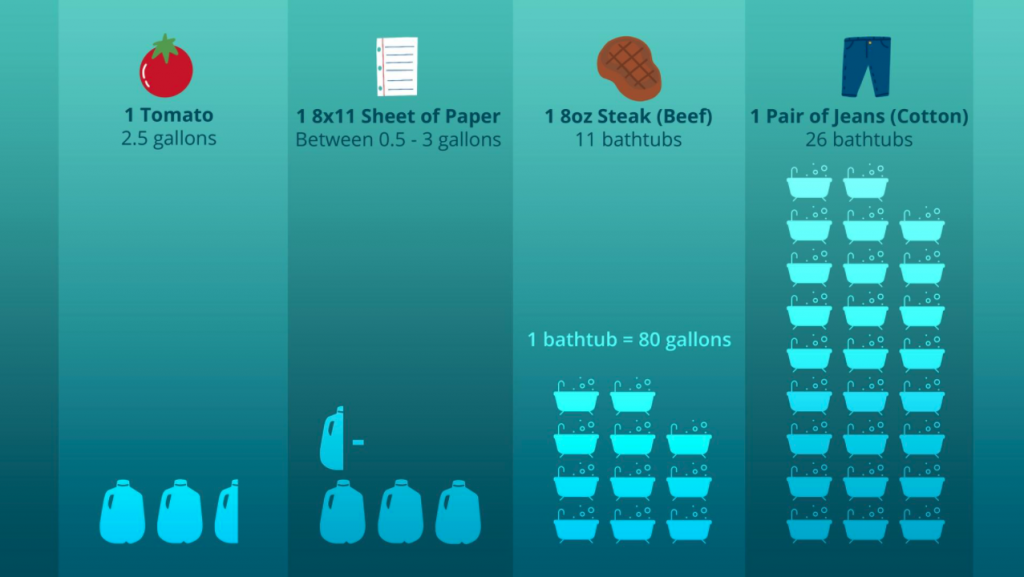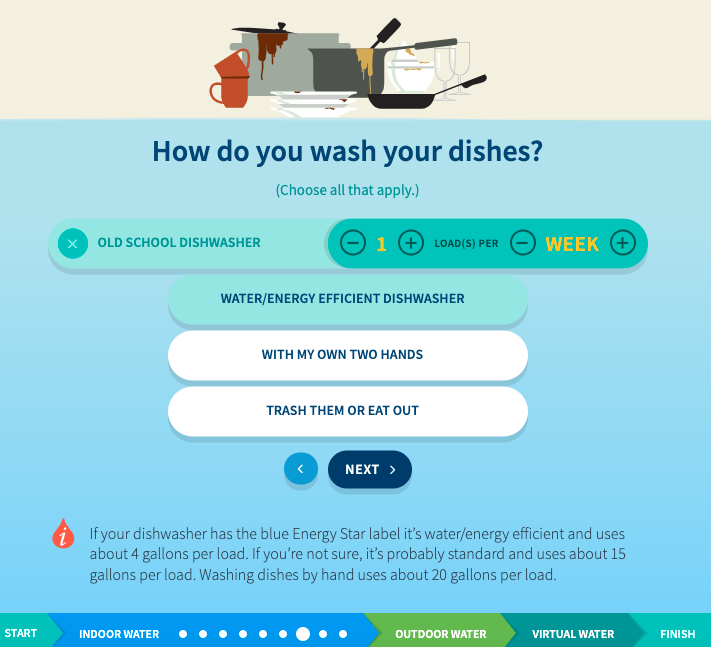

February 2022
Brought to you by the Office of Sustainability and the UF Thompson Earth Systems Institute.
Words can barely encompass the significance of water on our planet. Throughout history, water has played a fascinating role in the history of humankind. It has allowed civilizations to flourish, fostered connections across the world, and launched countless conflicts. Because of the diverse and beautiful ecosystems surrounding water, it has also provided simple joys and leisure to people for centuries. This is especially true here in the state of Florida, where water flows from the 1,000+ natural springs to the mystic swamplands of the Everglades to the pristine coastal beaches.
This relationship between water and people is essential as we look ahead to the future and consider the impacts of a changing climate. It is inevitable that people use water in their daily lives, but there is much complexity in the delicate connections between water, food, and energy systems. Water is the driving force behind both food and energy in today’s world. Water is needed to grow crops and produce energy. It also takes a considerable amount of energy to treat and move water.
The warmer temperatures, changing rainfall patterns, rising sea levels, and extreme weather events associated with climate change can all have an impact on the way we access and use water resources. In Florida, where water is key to economic, agricultural, and urban sectors, it is important to understand ways we can minimize and adapt the use of this vital resource.
Needless to say, there’s good reason to be aware of how your individual water usage and consumption, or what’s known as your water footprint, contributes to the greater whole. Great news, understanding a water footprint is a relatively simple action to take this month!
Let’s begin!
What Is A Water Footprint?
The average water footprint for an individual in the United States is 1,802 gallons/day. Sounds like a lot, right? Let’s break down what that means:
A water footprint is a measurement of the amount of water used in our day-to-day activities. Much like a carbon footprint, the measurement not only includes our daily consumption of water but also considers the total amount of water needed to produce goods and services in society. This helps us look at the overall water impact throughout the life cycles of various activities.
Direct Vs. Indirect Water Use
A water footprint calculation represents the volume of water consumed through both indirect and direct modes. Direct water use includes all water use on-site. Common examples include bathing, washing dishes, or watering the yard. Direct uses tend to be rather straightforward and most people have a moderate level of control to make adjustments on their direct water use.
Indirect water use, however, is the water needed for external production and processes. Most consumers never see how much water is used for these, which explains why indirect water use is also referred to as “virtual” water. Examples include the water used to grow cotton for clothing, produce meat, or maintain HVAC systems via cooling towers in large institutions and industries.

As a result, an individual’s indirect water footprint is typically larger than their direct water footprint. Most people are not even aware of how high their virtual water use is. For instance, it takes 2,080 gallons of freshwater to manufacture jeans and 880 gallons to produce one steak, making shopping habits and diets the go-to focal point when evaluating water footprints.
How To Measure Your Water Footprint
Upon first glance, it may seem daunting to actually measure a water footprint. Luckily, there is a user-friendly, detailed tool you can use to obtain an estimate without performing any math equations yourself.
Water footprint calculators are readily available online. The comprehensive water calculator available from GRACE Communications Foundation is a great place to begin. This free calculator acts as a simple survey with questions about household indoor/outdoor water use, food-related water use, and several other virtual water factors.

Once you reach the end of the survey, you/your household will receive a water footprint score, a detailed report that offers specific tips to adjust your daily habits, and a bar graph representing the distribution of your water footprint between indoor, outdoor, and virtual. You can then compare your overall score to the national average as well as see the numerical breakdown of the itemized average scores for each individual question. This makes it easy to hone in and predict the expected result that one small change could make on your overall water footprint!

Finally, you can set up an email reminder to be notified in three months to retake the calculation survey to track your changes. This tool for goal-setting is exactly what we love to see!
Analyzing Local Water Footprint Systems
While every individual has the power to discover and modify their own relationship with water, water footprint insights can be applied at many levels.
A water footprint calculation can be made to analyze the impact of entire industries, specific products, businesses, and even countries. When we explore the water footprints of larger systems, countless factors are involved. Geography usually comes up as one of the biggest pieces of the puzzle.
As mentioned earlier, water in Florida is woven into the identity of the ecosystems. There are some 82,000 square miles of freshwater contained in the aquifer that act as a source for the majority of the water supply used in the state, making water consumption and management a topic of high interest.
At the University of Florida, every small adjustment makes a difference for the future of the state’s water supply. UF’s water reclamation facility processes up to three million gallons of wastewater a day. In turn, this water is used to complete over 98% of UF’s irrigation needs, greatly reducing campus use of potable water. This is just one small example of how institutions are able to have an impact on water footprints on a larger scale.
3 Quick Ways To Reduce Your Individual Water Footprint
Now that you understand the ins and outs of the types of water footprint calculations out there, you are ready to start turning that knowledge into action! Here are three ways to reduce your footprint as an individual or household:
- Use less water for laundry! Make sure you’re washing full loads to limit the amount of water needed. The American Council for an Energy-Efficient Economy gives you permission to wear your clothes longer before you wash them in the name of doing fewer loads of laundry.
- Select pasture-raised food products! If you do consume meat, dairy, and eggs in your diet, choose pasture-raised products as they are less likely to be irrigated.
- Try out a rain barrel! You can position it under a gutter to collect rainwater that you can use for your daily watering needs (think washing your car or watering the lawn). It’s a good way to make the most of a sudden Florida downpour!
Water is essential to our lives, but the amount of freshwater available at any given time is limited. It can make a difference when you understand your water footprint and the ways that water is linked to energy, food, and climate. As consumers, choose to support initiatives that ensure a sustainable, equitable, and efficient use of water!
If you’d like to learn more about reducing your footprint of any kind, follow @SustainableUF and @UFEarthSystems on Facebook, Twitter, or Instagram!
